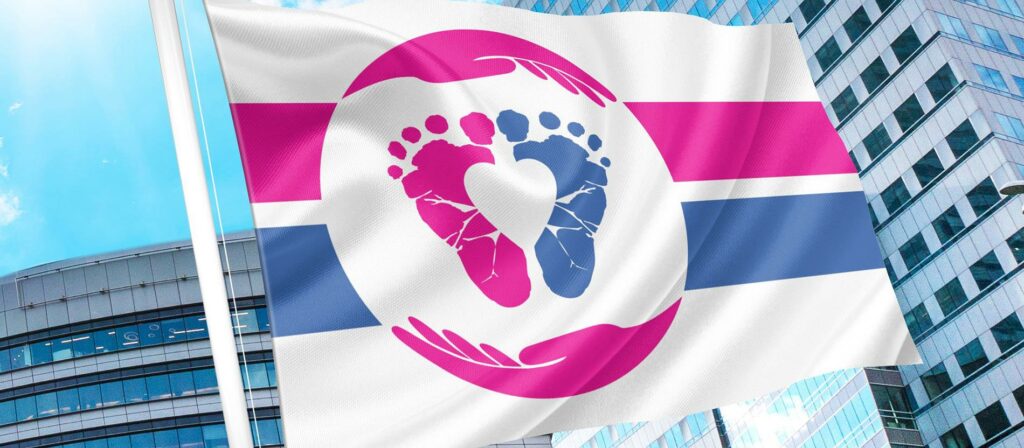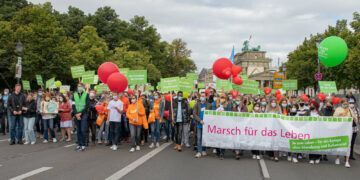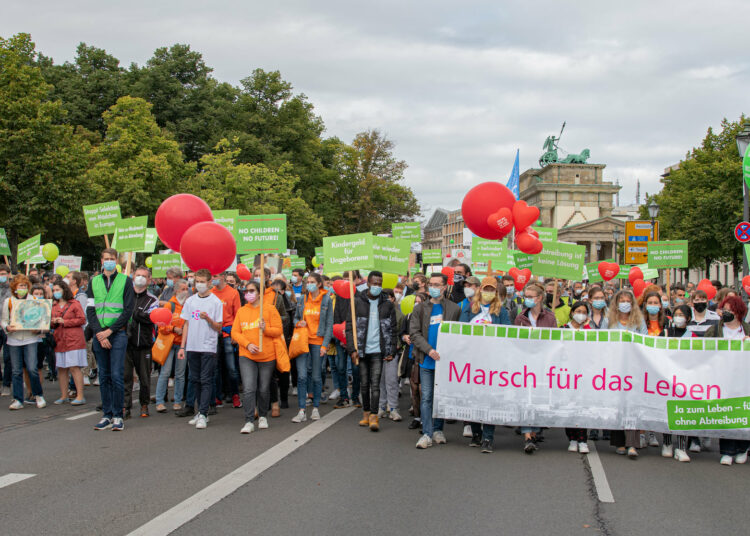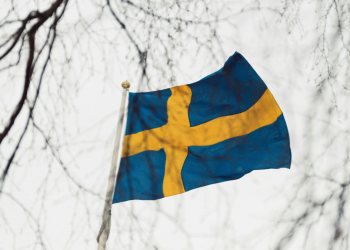Last updated on September 23rd, 2021 at 09:46 am
Berlin, once again, raised its voice for the protection of life. The March for Life 2021 closed successfully for the 17th time on Saturday. This year, over 4,500 pro-lifers from all over Germany made their way to the state capital to show their support for life shortly before the election.
Representatives of the Catholic Church, the Orthodox Church and the Protestant media were among the participants. The organizer was the Bundesverband Lebensrecht (BVL, National Associated “Right to Life“), an association of 15 organizations protecting life. The March for Life is the largest rally for the protection of life in Germany.
A highlight was the lecture by Helmut Matthies, former editor-in-chief of the evangelical news agency Idea. He placed abortion in the larger political context of recent German history and drew a connection to the fall of the Berlin Wall:
“Another serious injustice in the German Democratic Republic was that almost every second child was aborted. […] For the atheistic SED state, a human being was not a human being before birth. Abortion was part of socialist family planning.“
“Illegal parking will be punished, but those who want to have their child killed in the womb will be allowed to do so under very specific conditions,“ he added.
Bishop Rudolf Voderholzer was also present again. As one of the few church dignitaries in Germany, he distinguished himself in standing up for the unborn.
“[The March] is one of the very few occasions where we do sociopolitical work for the weakest in society. I want to raise my voice for those who don’t have a voice,“ he said in an interview with EWTN.
“I think just the efforts to disturb us and to insult us in the most obscene ways show that we are pointing out something important and sacred. Pope Francis has repeatedly said that abortion is murder, and he even speaks of murder for hire…You can see that the Holy Father is very serious,“ he added.
Of course, a counter-demonstration also took place. At the forefront of this “alliance of death“ were organized chaos and the Greens, who had previously spread agitation and fake news about the March: “’The religious and anti-feminist’ [meaning, pro-life activists] will threaten ‘pregnant women and people in counseling centers’. […] And we have to ‘confront’ them, which means nothing else than participate in the disturbances and blockades organized by left-wing radical rioters on that day,“ commented the Action SOS Life.
One of the participants, Jan Steenwerth, shared his impression with iFamNews: “I am delighted that, despite all the restrictions caused by the coronavirus measures, more than 4,500 people from all over Germany, including many young ones, gathered around a common cause to put life in the middle of the German capital. This year, too, many passers-by asked what the march was all about, and the reactions were consistently positive. The number of counter-demonstrators during the march this year was extremely small. There were 200–300 of them at the most. This shows that it is becoming more and more difficult to mobilize young people against life.“

Politically, pro-lifers in Germany get little support. A balance sheet of the Tagespost shows that the CDU/CSU do not mention life protection at all in their program. For the SPD, abortion is “basic care“. The FDP advocates an “objective counselling network“, and the abolition of paragraph §219a of the German Criminal Code. For the Greens, abortion should become part of medical training while the left continues to push for “reproductive justice“. The AfD is the only party that promotes a “welcoming culture for children“ and actively advocates for the protection of life in its election manifesto. The party cites moral and demographic reasons for the protection of life: “Society must convey respect for life and a positive image of marriage and parenthood in the family, schools and the media. This need can be seen in the fact that for years around 100,000 unborn children are killed in Germany every year, which is equivalent to the number of inhabitants of a large city.“




















Discussion about this post